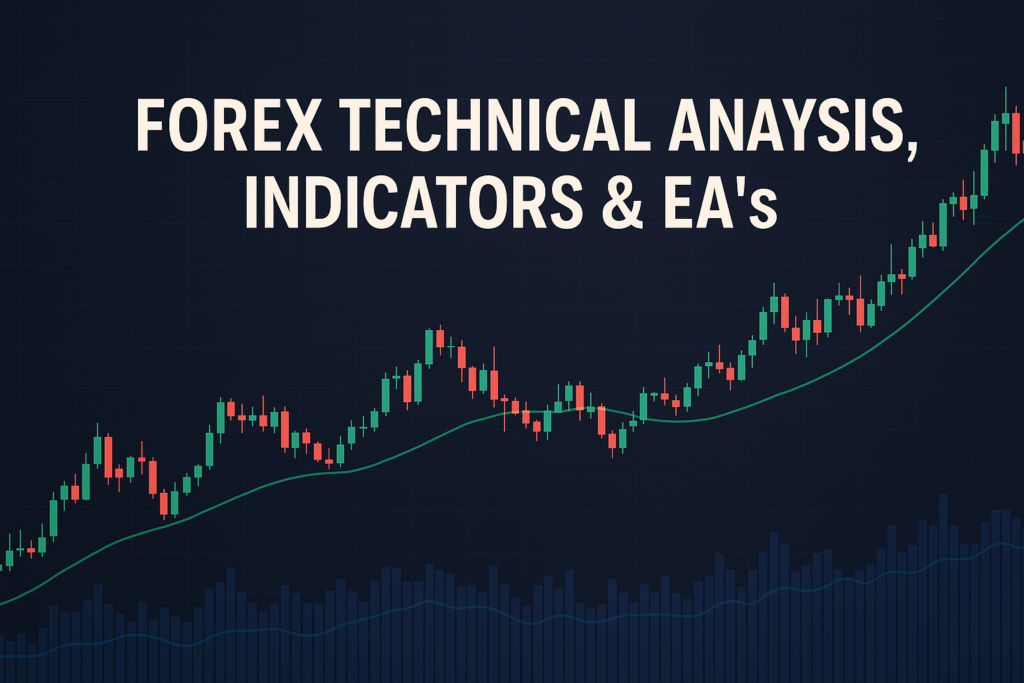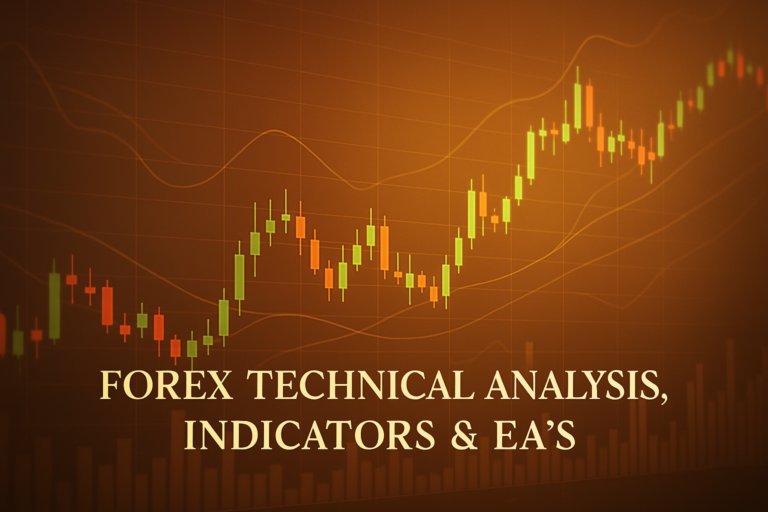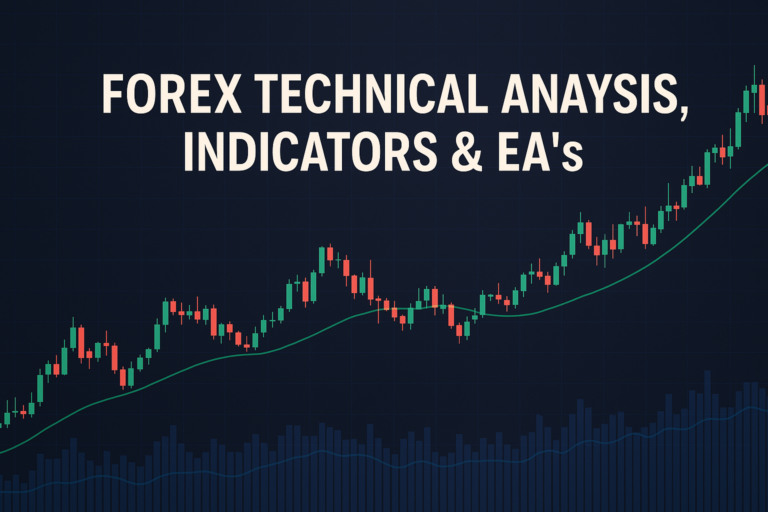
Bollinger Bands are essential for understanding price volatility in Forex trading and can enhance your trading strategies significantly.
Bollinger Bands are a popular tool in the world of Forex trading, helping traders make sense of price movements. Imagine you’re on a rollercoaster, with prices going up and down. Bollinger Bands act like safety bars, giving you a clearer view of where the price might go next. They are made of three lines: a middle line showing the average price and two outer bands indicating volatility.
However, many traders, both beginners and professionals, often find them confusing. Some struggle to grasp how to interpret the bands correctly, leading to mistakes in their trading strategies. Understanding Bollinger Bands is crucial because they can significantly enhance your trading decisions and potentially lead to better profits. In this article, we will explore what Bollinger Bands are, their history, advantages and disadvantages, how to apply them on trading platforms, and various strategies to use them effectively.
What is a Bollinger Bands?
Bollinger Bands are a technical analysis tool that helps traders understand price volatility. They consist of three lines: the middle line is a simple moving average (SMA), while the upper and lower bands are set a certain number of standard deviations away from the SMA. Think of it as a rubber band around the price. When prices move outside these bands, they are thought to either be overbought or oversold, indicating potential trading opportunities.
Types of Bollinger Bands
There are different types of Bollinger Bands based on the moving average used. The most common is the Simple Moving Average (SMA), which calculates the average price over a set period. There’s also the Exponential Moving Average (EMA), which gives more weight to recent prices, making it more responsive. Some traders prefer Weighted Moving Averages (WMA) for similar reasons.
How Bollinger Bands Smooth Out Price Action
One of the key benefits of using Bollinger Bands is that they help to smooth out price action. This means that instead of looking at the chaotic ups and downs of price, traders can see a clearer picture of trends. This smoothing effect allows traders to identify where the price is more likely to go next.
Common Periods Used and Why
Traders often use 20 periods for the SMA, which is a good balance between seeing short-term movements and longer-term trends. However, some traders may adjust this based on their trading style. For instance, day traders may use a shorter period, while swing traders may opt for a longer one. Understanding the right period for your strategy is vital for maximizing the effectiveness of Bollinger Bands.
The History of Bollinger Bands: How It Became Popular
Origin of Bollinger Bands
Bollinger Bands were created by John Bollinger in the 1980s. He wanted to develop a tool that could measure market volatility and help traders make better decisions. His innovative approach combined moving averages with standard deviations, and it quickly gained popularity.
When Did Traders Start Using It Widely?
Over the years, traders began to recognize the value of Bollinger Bands. By the 1990s, many professional traders were using them as part of their trading strategies. They found that the bands provided valuable insights into price movements, helping them identify opportunities in the market.
Real-life Stories
Many traders have attributed their successes to using Bollinger Bands. One famous story involves a trader who noticed a stock was consistently bouncing off the lower band. He started buying at that point, and as the price rose, he made a significant profit. Stories like this show how Bollinger Bands can lead to smart trading decisions and financial success.
Advantages and Disadvantages of Bollinger Bands
Advantages:
- Helps Identify Trends Easily: Bollinger Bands can clearly show when a trend is forming or reversing.
- Useful for Dynamic Support and Resistance: The outer bands can act as support and resistance levels.
- Works Well for Crossover Strategies: Traders can use crossovers between the bands and price to signal potential trades.
Disadvantages:
- lags Behind Price Movements: Because Bollinger Bands use historical data, they can sometimes react too slowly to sudden market changes.
- Can Give False Signals in Sideways Markets: In a sideways market, prices may frequently touch the bands without a clear trend, leading to confusion.
How to Apply Bollinger Bands on MT4 & MT5
Step-by-Step Guide to Adding Bollinger Bands on Charts
To add Bollinger Bands to your charts on MT4 or MT5, simply right-click on the chart. Select “Insert,” then “Indicators,” and choose “Bollinger Bands.” This will add the bands to your chart, allowing you to start analyzing the price movements.
Customizing Bollinger Bands Settings
You can customize the settings of Bollinger Bands to fit your trading strategy. Right-click on the bands and choose “Properties.” Here, you can change the periods, colors, and types of moving averages used, allowing you to tailor the bands to your style.
Saving Templates for Easy Application
Once you have customized your Bollinger Bands, you can save the template for future use. Right-click on the chart, select “Template,” and then “Save Template.” This makes it easy to apply your favorite settings to new charts quickly.
5 to 7 Trading Strategies Using Only Bollinger Bands
1. All-Time Frame Strategy (M5 to D1)
This strategy works on any time frame, allowing you to adapt based on your trading style. When the price touches the lower band, consider buying, and when it touches the upper band, think about selling. For example, if you see a currency pair at the lower band on a 15-minute chart, you may enter a buy position.
2. Trending Strategies
In a strong trend, use Bollinger Bands to identify entry points. Wait for a price retracement to the lower band in an uptrend for a buying opportunity. For example, if the price is generally rising and touches the lower band, it may be a good time to buy.
3. Counter Trade Strategies
This strategy involves trading against the trend. When the price touches the upper band, consider selling, expecting a reversal. If a currency pair is at the upper band, it may be due for a pullback.
4. Swing Trades Strategies
For swing trading, wait for the price to break above the upper band to enter a buy position. If it breaks below the lower band, consider selling. This helps capture larger price movements.
5. Bollinger Squeeze Strategy
A Bollinger Squeeze occurs when the bands get narrow. This indicates low volatility, and a breakout is likely. When the price breaks above the upper band, consider buying; if it breaks below the lower band, think about selling.
5 to 7 Trading Strategies Combining Bollinger Bands with Other Indicators
1. Bollinger Bands with RSI (Relative Strength Index)
Combine Bollinger Bands with the RSI to confirm signals. When the price hits the lower band and the RSI is below 30, it’s a strong buy signal. If it touches the upper band and the RSI is above 70, consider selling.
2. Bollinger Bands with MACD (Moving Average Convergence Divergence)
Use MACD to confirm Bollinger Bands signals. If the price touches the lower band and the MACD line crosses above the signal line, it’s a good buy signal. Conversely, if the price hits the upper band and the MACD crosses below, consider selling.
3. Bollinger Bands with Moving Averages
Combine Bollinger Bands with other moving averages for trend confirmation. If the price is above both the upper band and a 50-period moving average, it indicates a strong uptrend, suggesting a buy.
4. Bollinger Bands with Stochastic Oscillator
Use Bollinger Bands with the Stochastic Oscillator for entry signals. If the price touches the lower band and the Stochastic is in the oversold area, consider buying. If it touches the upper band and the Stochastic is overbought, think about selling.
5. Bollinger Bands with Fibonacci Retracement
Use Fibonacci levels with Bollinger Bands for additional support and resistance levels. If the price retraces to a Fibonacci level and touches the lower band, it may be a good buy opportunity.
Top 10 FAQs About Bollinger Bands
1. What are Bollinger Bands?
Bollinger Bands are a technical analysis tool that consists of three lines: a middle line (SMA) and two outer bands indicating volatility.
2. How do I use Bollinger Bands?
Use Bollinger Bands to identify potential buy or sell signals when the price touches the outer bands.
3. Can Bollinger Bands be used in any market?
Yes, Bollinger Bands can be used in Forex, stocks, and other markets to analyze price volatility.
4. Are Bollinger Bands reliable?
While they can provide valuable insights, Bollinger Bands should be used with other indicators to confirm signals.
5. How do I customize Bollinger Bands?
You can customize Bollinger Bands on trading platforms by adjusting the periods, moving average type, and colors.
6. What is the best time frame for Bollinger Bands?
Bollinger Bands can be used on any time frame, but choose one that fits your trading style. Day traders may prefer shorter time frames, while swing traders might use longer ones.
7. Can I trade based solely on Bollinger Bands?
While you can trade using only Bollinger Bands, combining them with other indicators may improve your success rate.
8. How do I recognize a Bollinger Squeeze?
A Bollinger Squeeze occurs when the bands narrow, indicating low volatility and a potential breakout.
9. Do Bollinger Bands work in ranging markets?
Bollinger Bands can provide signals in ranging markets, but may give false signals, so use caution.
10. Can I automate Bollinger Bands trading?
Yes, many trading platforms allow you to automate trades based on Bollinger Bands signals through expert advisors or scripts.
Conclusion
Bollinger Bands are a powerful tool that can greatly enhance your Forex trading strategies. By understanding how they work and applying them correctly, you can identify potential trading opportunities and make informed decisions. Remember to test your strategies on a demo account before risking real money. Happy trading!
Expand Your Knowledge
- 📌 Forex Trading Learning Road Map
- 📌 Forex Trading Course with no Fees
- 📌 Forex Trading Issues, Problems, and Solutions
- 📌 Forex Daily Forecast & Live Updates
- 📌 Forex Fundamental & News Analysis: Tomorrow’s Market Movers & Trade Opportunities
- 📌 Forex Education Hub: Learn & Profit
- 📌 Forex Technical Analysis, Indicators & EA’s
Start Trading Today
Ready to take your forex trading to the next level? Open an account with Exness, one of the most trusted platforms in the industry. 👉 Sign Up Now and start trading with confidence!
Exness stands out with ultra-low spreads for mini traders, instant withdrawals, and zero spread accounts for pro traders. Trusted since 2008, Exness offers lightning-fast execution, no hidden fees, and a secure, transparent trading environment—giving you the edge you need to succeed. 🚀 Join now and trade smarter!
Watch this helpful video to better understand Bollinger Bands:
Note: The video above is embedded from YouTube and is the property of its original creator. We do not own or take responsibility for the content or opinions expressed in the video.
In this YouTube video, the presenter introduces a profitable trading strategy that combines the use of Bollinger Bands and the Relative Strength Index (RSI), making it simple and effective for traders. First, the video explains how to set up Bollinger Bands by adjusting the settings on a trading platform like TradingView. The key adjustments include setting the length to 30 and the standard deviation to 2, which helps in identifying support and resistance levels. The presenter emphasizes that the center line of the Bollinger Bands represents a moving average calculated over the specified length, while the upper and lower lines indicate standard deviation levels. Following the Bollinger Bands setup, the presenter adds the RSI indicator, modifying its settings to have upper and lower bands at 70 and 30, respectively, and changing the length to 13. The RSI helps determine if a security is overbought or oversold, providing additional context for trading decisions.
The core of the strategy hinges on the concept of mean reversion, which suggests that prices will return to the average after significant movements. Traders should enter a short position when the price exceeds the upper Bollinger Band and a long position when it falls below the lower band. However, to enhance the strategy’s effectiveness, the presenter introduces a critical condition: traders should only act when the RSI reaches extreme values—below 25 for long trades and above 75 for short trades. A crucial warning is given regarding sideways market movements, as these can lead to false signals and potential losses. The presenter suggests monitoring the width of the Bollinger Bands and the behavior of the RSI as indicators of potential market momentum shifts. For instance, if the price moves lower while the RSI shows a higher low, it indicates a divergence, which can be a strong signal to enter a trade. Overall, combining Bollinger Bands and RSI can create a robust trading strategy when used carefully and with patience.



